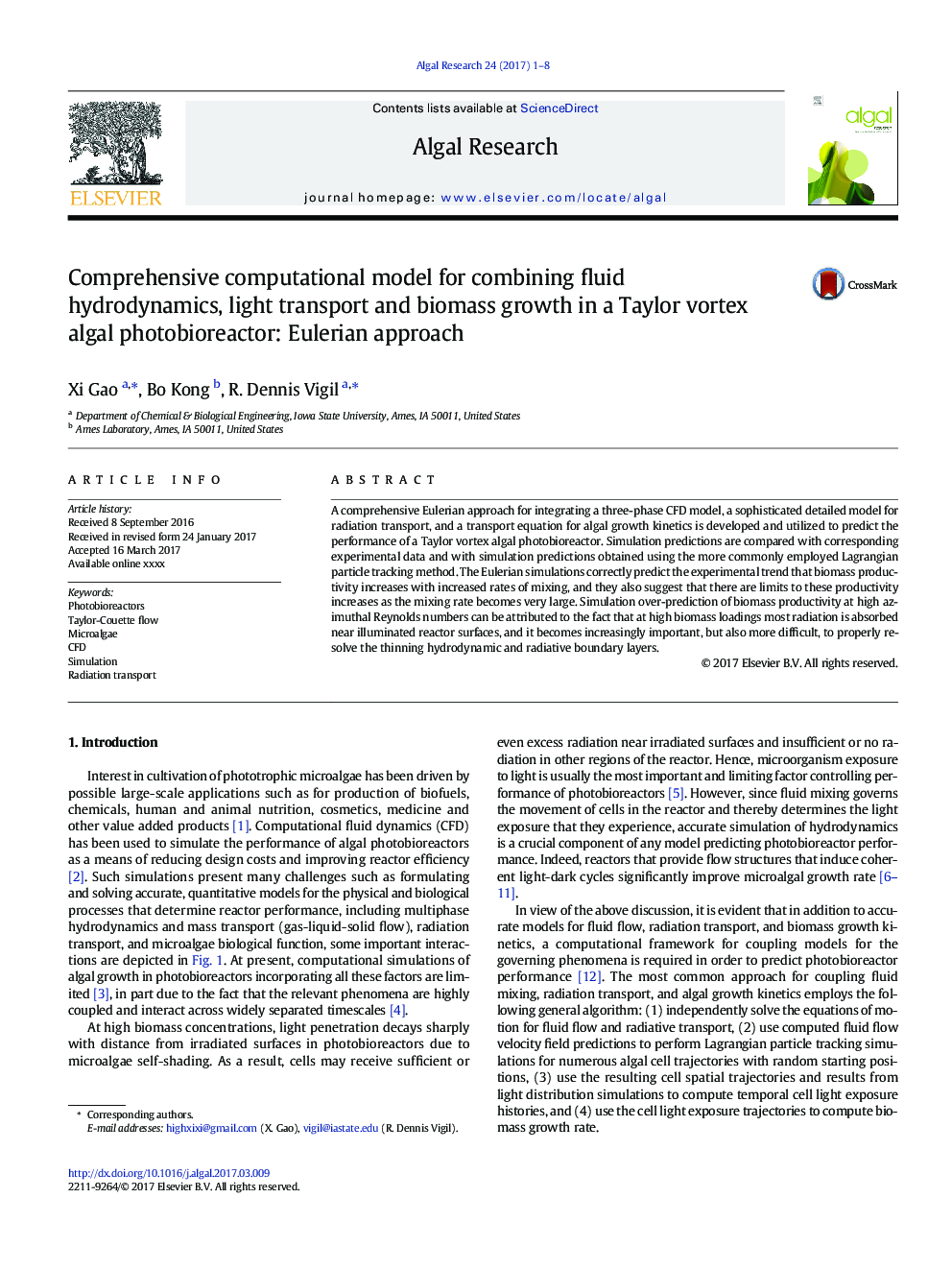| Article ID | Journal | Published Year | Pages | File Type |
|---|---|---|---|---|
| 5478441 | Algal Research | 2017 | 8 Pages |
Abstract
A comprehensive Eulerian approach for integrating a three-phase CFD model, a sophisticated detailed model for radiation transport, and a transport equation for algal growth kinetics is developed and utilized to predict the performance of a Taylor vortex algal photobioreactor. Simulation predictions are compared with corresponding experimental data and with simulation predictions obtained using the more commonly employed Lagrangian particle tracking method. The Eulerian simulations correctly predict the experimental trend that biomass productivity increases with increased rates of mixing, and they also suggest that there are limits to these productivity increases as the mixing rate becomes very large. Simulation over-prediction of biomass productivity at high azimuthal Reynolds numbers can be attributed to the fact that at high biomass loadings most radiation is absorbed near illuminated reactor surfaces, and it becomes increasingly important, but also more difficult, to properly resolve the thinning hydrodynamic and radiative boundary layers.
Related Topics
Physical Sciences and Engineering
Energy
Renewable Energy, Sustainability and the Environment
Authors
Xi Gao, Bo Kong, R. Dennis Vigil,
